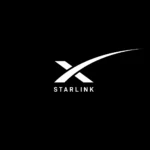Satellite broadband for business
Save your business thousands with our satellite deals
Just enter your business postcode…
Save your business thousands with our satellite deals
Just enter your business postcode…
Start saving now
Satellite business broadband is a practical choice for businesses based in rural or hard-to-reach locations. It uses satellite internet technology to provide fast, dependable connectivity where fibre or 5G services aren’t available.
Satellite broadband for businesses is ideal for construction sites, farms, outdoor venues or as a backup internet solution for rural sites.
We help you find the best satellite internet providers and the most suitable package based on your location and needs.

Enter your postcode and a few quick details into our smart form. This helps us match your business with the most suitable satellite broadband options.

Once you’ve submitted your details, our experts will review your requirements and prepare a tailored business satellite broadband quote.

Once you’re happy with the quote, you can sign up quickly. Installation is fast, and your business will be up and running with reliable satellite broadband in no time.
Business satellite broadband pricing can vary based on the provider, usage, and setup. Below, we break down the key cost areas to help you understand what to expect before choosing a satellite internet provider.

Your ongoing service fee depends on your provider and how much data you need.

Some providers charge based on how much data you use. For example, Starlink’s business packages are priced as follows:

To use satellite broadband services in UK, you’ll need specific hardware:

Most providers offer plug-and-play hardware shipped to your site, but installation options include:

You can customise your package with business-focused extras, such as:
Choosing the right business satellite broadband provider doesn’t need to be complicated. Here’s why businesses trust us to make it simple and effective.

We provide you with a tailored quote, designed for your business. Just enter your postcode above and we’ll connect you with the most suitable satellite internet providers based on your location, speed requirements, and budget.

Our experts guide you through the options, from equipment and setup to data limits and contract terms, so you can choose the right satellite broadband for your business with complete confidence.

We’ll help your business get connected quickly with flexible installation options in place, whether you choose to install the equipment yourself or prefer a professional engineer to handle everything on site.
The UK offers several satellite business broadband providers catering to various needs. These providers are satellite network operators or third-party resellers that bundle additional services. Here’s an overview of the leading satelitte business broadband providers:

BT business broadband offers satellite internet in partnership with OneWeb and Eutelsat, providing reliable internet services for businesses in remote or challenging locations. Their services integrate seamlessly with BT’s wider business broadband deals.

Starlink, operated by SpaceX, offers high-speed, low-latency broadband through a large Low-Earth Orbit (LEO) satellite constellation. It’s available across mainland UK and maritime borders, providing a reliable service for businesses in remote areas.

FreedomSat delivers satellite broadband using KA-SAT and HYLAS 1 GEO satellites, offering 25–50 Mbps download speeds. With flexible plans and data caps ranging from 10 to 100 GB, they cater to businesses in rural or remote areas needing reliable internet access.

Brdy offers satellite broadband using a mix of LEO and GEO networks, including Starlink, OneWeb, and Eutelsat. They provide tailored solutions for industries like healthcare, agriculture, retail, and offshore energy, focusing on delivering reliable service for diverse business needs.

Bigblu is a third-party provider offering satellite broadband via Eutelsat’s GEO satellites. They offer several packages for rural businesses, with pricing available upon enquiry, making them a good choice for businesses needing tailored satellite broadband services.
Satellite internet is no longer a last resort, it’s a high-performance, scalable solution for businesses that need dependable connectivity beyond the reach of tethered broadband.
Below are the key benefits for businesses:

Satellite broadband can reach remote, rural, and underserved locations where fibre or 5G services are unavailable. It’s ideal for construction sites, agricultural operations, or businesses working across dispersed sites without fixed infrastructure.

Satellite broadband doesn’t rely on landlines or complex infrastructure. Once your equipment arrives, it can be installed quickly, either by your team or a professional, so your business can get connected and online without unnecessary delays.

Modern satellite services, particularly those using Low-Earth Orbit (LEO) technology, now deliver fast and reliable speeds. Providers like Starlink offer performance that rivals business fibre broadband or 5G business broadband, making satellite internet suitable for video calls, cloud-based tools, and data-heavy applications.

Satellite internet is well suited for businesses that need to scale. Whether you’re adding new sites, deploying temporary offices, or expanding into rural areas, satellite broadband can be deployed quickly and adjusted to match your data usage needs.

For businesses relying on uptime, satellite internet serves as an excellent backup connection. It ensures your operations can continue even if your primary broadband service fails, providing peace of mind for critical communications and services.
Satellite broadband comes in three main types, determined by the orbit of the satellite network your business connects to. Each orbit has unique features affecting speed, latency, and coverage. Here’s a quick breakdown:

GEO satellites orbit 35,786 km above the equator, staying fixed relative to a point on Earth. They provide wide coverage per satellite, making them ideal for broadcasting and broad-area connectivity. Speeds range from 10–100 Mbps, but latency is higher at 600–800 ms due to the long signal travel distance.

MEO satellites operate at 2,000–35,786 km altitudes, balancing speed and latency. With speeds of 25–150 Mbps and latency of 150–250 ms, they require fewer satellites than LEO for continuous coverage, making them suitable for regional broadband services.

LEO satellites orbit at altitudes of 160–2,000 km, providing the fastest speeds (100–200+ Mbps) and lowest latency (20–60 ms). Their proximity to Earth enables high performance but requires a large constellation of satellites to ensure consistent global coverage.
Satellite broadband delivers internet access by transmitting data to and from satellites orbiting the Earth.
Here’s how it works:

Internet data is sent from a ground station to a satellite using high-frequency radio waves, forming the first link in the connection between your business and the wider internet.

The satellite receives the signal and beams it back down to Earth, covering a large area. Lower-orbit satellites offer better speeds, while higher-orbit ones provide broader coverage.

A satellite dish at your premises receives the signal and passes it through a modem to your router, which then distributes the internet connection to your business devices.

When you use your devices, data is sent back through the same route, from your equipment to the dish, up to the satellite, then back down to the ground station and to the wider internet.
Satellite broadband has come a long way in delivering reliable connectivity for businesses, even in remote locations. Its performance depends on the type of satellite network, with factors like speed, latency, and consistency varying across different providers and technologies. Here’s what you need to know:
The speeds of satellite broadband vary depending on the satellite network in use, with those in lower orbits able to support higher speeds comparable to fibre broadband.
Satellite internet has higher latency than traditional broadband due to the long distance that signals must travel from the Earth to the satellite and back.
Here is a list of the typical speeds and latencies of various internet satellite networks currently serving the UK:
| Satellite Network | Type | Download Speeds (Mbps) | Latency (ms) | Operating since |
|---|---|---|---|---|
| Starlink | LEO | 25-220 | 25-60 | 2020 |
| OneWeb | LEO | <150 | <40 | 2022 |
| Avanti HYLAS | GEO | 10 | 500 - 800 | 2010 |
| Viasat KA-SAT | GEO | <50 | 600 - 800 | 2011 |
| Eutelsat KONNECT VHTS | GEO | <100 | 600 - 700 | 2023 |
| Viasat-3 (Coming Soon) | GEO | <100 | <800 | Expected 2024-25 |
Satellite internet has higher latency than traditional broadband due to the long distance that signals must travel from the Earth to the satellite and back.
This is especially true with GEO satellite broadband where signals must travel at least 70,000km before reaching their destination.
However, the new generation of LEO satellites, which orbit the closest to Earth, have low enough latencies for contemporary internet uses like video conferencing and business VoIP phone systems.
The table below shows how speeds and latencies compare to traditional broadband technologies:
| Technology | Typical speeds (Mbps) | Typical latency (ms) |
|---|---|---|
| Full fibre business broadband | 70 - 1000+ | 5 - 10ms |
| SoGEA | 30 - 70 | 10 - 15ms |
| Cable (Virgin) | 100 - 1000+ | 10 - 20ms |
| 5G | 50 - 1000 | 5 - 70ms |
| 4G | 10 - 50 | 30-50ms |
| LEO satellites, Starlink, OneWeb | <400 | 20-70ms |
| GEO satellites | <100 | 500-1000ms |
Both satellite and 5G broadband offer wireless internet access, but they’re delivered in very different ways, and each suits different types of business needs.
Satellite broadband: Uses orbiting satellites to deliver connectivity almost anywhere in the UK. It’s ideal for businesses in rural or remote areas, or for sites where fixed-line or mobile signals are unreliable.
5G business broadband: Relies on ground-based mobile masts and is designed for ultra-fast speeds and low latency, but only works well where strong 5G coverage is available.
If your business operates in a rural area without access to reliable 5G, full fibre business broadband or SOGEA business broadband coverage, satellite broadband offers a practical and dependable alternative.